I am making a sample application where there will be two video elements and a button "Call". The first video element (#localVideo) will show the output of the local media stream. When i press the call button the remote video element will play the remote media stream. I have made the same application in raw JavaScript, which is working fine.
In VueJS, i am making a WebRTC component to get the user media and set the stream to the local video element. When users press the call button, i am creating both of the RTCPeerConnection objects, sending the offer, setting local description, sending answer and all.
here is the template of the component -
<template>
<div class="webRTC">
<video id = "localVideo" playsinline autoplay muted></video>
<button id = "call" v-on:click='call'> Call </button>
<video id = "remoteVideo" playsinline autoplay controls></video>
</div>
</template>
<script src="./webRTC.js"></script>
And here is the script for the component -
export default {
name: 'webRTC',
sockets: {
connect: function () {
console.log('Socket IO connected!')
},
TestConnection: function () {
console.log('Test connection successful!')
}
},
data: function () {
return {
localStream: null,
remoteStream: null,
pc1: null,
pc2: null
}
},
methods: {
call: function () {
this.pc1 = new RTCPeerConnection()
this.pc1.addEventListener('icecandidate', e => this.addIceCandidate(this.pc1, e))
this.pc2 = new RTCPeerConnection()
this.pc2.addEventListener('icecandidate', e => this.addIceCandidate(this.pc2, e))
this.pc2.addEventListener('track', this.gotRemoteStrem)
this.localStream.getTracks().forEach(track => {
console.log('Adding local stream')
this.pc1.addTrack(track, this.localStream)
})
this.pc1.createOffer({ offerToReceiveAudio: 1, offerToReceiveVideo: 1 }).then(this.gotDescription)
},
gotRemoteStrem: function (event) {
console.log('Got Remote stream')
let remoteVideo = document.querySelector('#remoteVideo')
this.remoteStream = event.streams[0]
remoteVideo.srcObject = event.streams[0]
},
gotDescription: function (description) {
console.log('Got description 1')
this.pc1.setLocalDescription(description)
this.pc2.setRemoteDescription(description)
this.pc2.createAnswer().then(this.gotDescription2)
},
gotDescription2: function (description) {
console.log('Got description 2')
this.pc2.setLocalDescription(description)
this.pc1.setRemoteDescription(description)
},
addIceCandidate: function (pc, event) {
this.getOtherPC(pc).addIceCandidate(event.candidate).then(this.addIceCandicateSuccess).catch(this.addIceCandicateFailure)
},
addIceCandicateSuccess: function () {
console.log('Ice candidate added successfully')
},
addIceCandicateFailure: function () {
console.log('Ice candidate failure')
},
getOtherPC: function (pc) {
if (pc === this.pc1) {
return this.pc2
}
return this.pc1
},
gotDevices: function (stream) {
let localVideo = document.querySelector('#localVideo')
this.localStream = stream
localVideo.srcObject = stream
},
handleMediaError: function (error) {
console.error('Error:' + error.name)
}
},
created: function () {
console.log('webRTC is created!')
let prom = navigator.mediaDevices.getUserMedia({ audio: true, video: true }).then(this.gotDevices).catch(this.handleMediaError)
}
}
The local video is showing properly. The problem i am facing is that, when i am pressing the Call button, the remote video is not showing anything, rather i see a loading circle like in the screenshot. There is no console error as well.
I have debugged and saw the srcObject of both local and remote video and they appears to be same -
 Can anyone please tell me if i am doing something wrong? Also is there any other way to debug this?
Can anyone please tell me if i am doing something wrong? Also is there any other way to debug this?
Note:
The project/source code can be downloaded from here, if you want you can download and check the code. I will try to prepare a codepen - https://drive.google.com/open?id=1e7C0ojZ0jT7EXFNtCKcWpJBpKd_mWi_s
